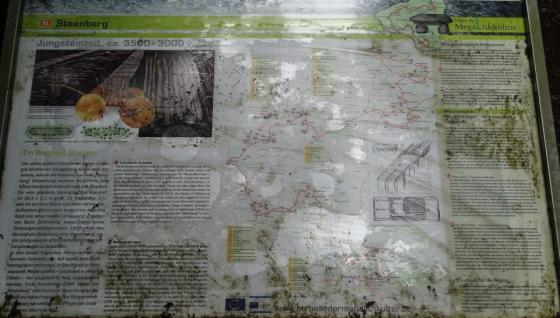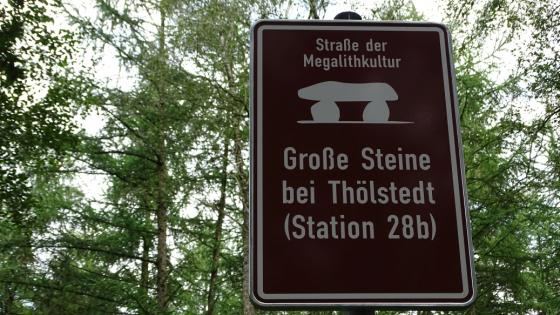taken from the “Faszination Archäologie” information board:
Neolithic tomb
The megalithic tomb was exposed early to human destruction. Today it is one of the less well-preserved Neolithic tombs of the Wildeshauser Geest. The remaining stones nevertheless give an idea of the original layout.
Testimony of sedentary life
Megalithic tombs are considered the oldest surviving structures of northern Central Europe. Until the fourth millennium BC only hunters and gatherers lived in the Wildeshauser Geest. Only the “funnel beaker culture” (about 3500 – 2700 BC) settled down permanently.
They bred cattle, planted grain and lived in post constructions. Presumably, they believed in an otherworldly life and therefore built their deceased sometimes monumental graves of boulders. Those megalithic graves or megalithic tombs (Greek: mega = large, lithos = stone) were erected not for individuals, but for groups and used over many generations.








































